Notched sticks to calculators: the history of counting machines
A heterodox take on the prehistory, the golden years, and the future of general-purpose calculating aids.
I find it difficult to talk about the history of the computer. The actual record is dreadfully short: almost nothing of consequence happened before the year 1935. We keep looking for a better story, but we inevitably end up grasping at straws.
Just look at what we’ve done so far. The “father of the computer” is no longer Konrad Zuse (Z1, 1938) or John Mauchly (ENIAC, 1943). Somehow, we pivoted to Charles Babbage — a 19th century polymath who never constructed such a device, and had no luck inspiring others to try. Not content with this injustice, we also turned “computing” into a meaningless word. On Wikipedia, the timeline of computer hardware includes mechanical clocks, dolls, weaving looms, and a miniature chariot from 910 BCE. It’s historical synthesis run amok.
To me, the calculator is a particularly regrettable casualty of this expansionist approach. Of course, the development of the calculator is intertwined with the history of the computer — but it deserves to be treated as a story of its own.
The ancient art of tallying goods
We know that sophisticated trade-based economies go back at least 5,000 years — and that even in their early days, they required merchants to maintain accurate inventories, tally the proceeds, and keep track of debt.
There is ample archeological evidence of specialized tools used to accomplish these tasks. For addition and subtraction, the implements included notched sticks and bones, rope tied with knots — and later, rudimentary manually-operated “registers” such as the abacus:
For multiplication, it was common to rely on lookup tables. The earliest known Babylonian multiplication table is 4,000 years old. The first decimal tables discovered in China date back to around 300 BC:
Both the abacus and the multiplication table remained in common use well into the 20th century — largely unchanged, but sometimes “updated” in wacky ways:
Such novelties notwithstanding, the first commercially successful automatic calculation aid was the slide rule. The device, developed in the early 17th century, exploited the properties of logarithms, essentially turning multiplication and division into the comparatively simpler problem of addition and subtraction — and then automating that last step with a sliding assembly. The basic idea is illustrated below:
To calculate 4 × 8, we align the “1” on the top logarithmic scale to point to the first operand (4) on the lower scale. We then read the value directly below the second operand (8). This works out to 32.
In practice, most slide rules had had two fixed elements (stators), a sliding portion in the middle, and a moveable cursor to facilitate precise readouts on a number of overlapping scales:
The slide reigned supreme well into the 1970s, an indispensable fashion accessory for every engineer worth a dime. It’s been manufactured in a variety of form factors, including some fairly unusual designs:
Because of the limitations of human eyesight, small side rules weren’t particularly accurate. One ingenious workaround was to wrap a very long scale around a more compact Bakelite tube. Such “tube-style” slides include the Otis King calculator and the Fuller calculator:
The carry mechanism
Although the slide rule revolutionized engineering, it was more or less a one-trick pony. It could only tackle a specific subset of computations, required user training and care to avoid mistakes, and provided only approximate results.
The other major breakthrough in automation arrived with the invention of the carry mechanism. A counting device equipped with carry solved one of the most significant hurdles of using the abacus: the need to manually reset the rows and carry over values on overflow.
The first functional design of an adding machine with carry is conventionally credited to Blaise Pascal in 1642, although it wasn’t until the 19th century that simplified designs started cropping up in trade. The most rudimentary device of this type in my collection is an early Webb adder:
The Webb adder is operated with a stylus. It has a protruding stylus stop (at 3 o’clock), a fixed numerical scale around the perimeter, and a series of holes drilled in a rotating disk. There is also a sight window (at 9:00) displaying numbers stamped on the disk.
To add a number, one places a stylus in one of the marked holes and then rotates the disk clockwise toward the stop. This advances the value in the sight window. The operation can be repeated, with each cycle having a cumulative effect on the value shown in the sight window. On overflow — that is, right before the large disk completes a full turn and wraps back to “00” — an internal pawl advances the smaller disk by one. The resulting range of the Webb adder is 0,000-5,000.
Many of the early attempts to improve the adder often turned out to be evolutionary dead ends; for example, the Adix calculator traded the clunky stylus for a keyboard, with ten keys that advanced a three-disk carry mechanism. Alas, this only allowed single-digit numbers to be added in each step:
A more practical improvement was to keep the stylus but switch to one disk per decimal digit, permitting multi-digit numbers to be entered while keeping the mechanism reasonably compact. Devices of this sort continued to sell well into the 1970s:
A number of other inexpensive 20th century designs relied on vertically-mounted disks, chains, or sliding bars — but the fundamental principle was the same:
The accumulator
Adders, as the name implies, were good for adding and not much more. Using them for multiplication or division was theoretically possible, but required the user to repeatedly re-enter the same operand, possibly dozens or hundreds of times. Not only was this error-prone, but the process was markedly slower than performing the same calculation with pen and paper.
The next major invention, credited to Gottfried Wilhelm Leibniz in 1672, was the separation of the input register and the output register (“accumulator”) of a calculator. In this design, modifying the input register had no immediate effect on the output value. The number would be added to (or subtracted from) the output only when the operator turned a special crank, thanks to a fairly simple coupling mechanism known as the stepped drum.
Because the entered value persisted in the input register, multiplication and division could be accomplished by simply spinning the crank a desired number of times. Further, a separate turn counter could be furnished to minimize mistakes; and a movable coupling between the registers could be used to permit rapid multiplication by powers of ten.
A sophisticated mechanical calculator with all these features is shown below. The input register is visible on top, with a rapid clearing lever on the left. The output register is on the bottom right, next to the crank counter. Two lever-like buttons in front move the carriage left and right:
To calculate 79 × 123, one could enter “79” by manipulating small levers on top of the input register. The operator would turn the main crank three times (x3); shift the carriage and turn the crank two times (x20); and then shift again while performing a single turn of the crank (x100).
Although all desktop calculators of that era have their charm, the most sought-after variation of the theme is the Curta: an incredibly complex clockwork-like pocket calculator designed in Austria in the 1930s by an inventor who was later forced to continue the work in a German concentration camp. A well-preserved specimen will usually fetch $1,500 or more, compared to few hundred bucks for a desktop device:
The Curta isn’t fundamentally different from the Rapid calculator showcased earlier, but its sheer level of miniaturization is the source of its lasting appeal.
All kinds of fully-featured mechanical calculators continued to be made well into the second half of the 20th century. The designs were simplified, cranks were replaced with smaller buttons or levers, and metal enclosures gave way for injection-molded plastics:
One would expect the electronic calculator to be the immediate next step in the evolution of counting devices. Not so: it was simpler to fit mechanical calculators with a motor in place of a lever or a crank. Here’s an example of another Belgium-made Bohn calculator that appears strikingly similar to the model shown above, except for an extra power cord:
The digital age
Specialized electronic calculating machines started appearing several years before WWII, and transistors were commercialized in the early 1950s. It is surprising, then, that commodity calculators did not arrive until the 1970s. As is turns out, the main reason for the holdup was the lack of a suitable display technology. Indeed, display tech remained a limiting factor for calculators for many decades to come.
A handful of early digital calculators were equipped only with a printer, but that made them rather wasteful and cumbersome to use. To remedy this, one or two manufacturers experimented with cathode ray tube (CRT) displays. Alas, the added bulk and the high cost made their devices a tough sell:
This particular device, featuring reverse Polish notation, weighed over 40 lbs and cost about as much as a car. It used acoustic (magnetostrictive) delay line memory and contained no integrated circuits whatsoever; all the CRT digit drawing was done with discrete components. It was a marvel of engineering, but not a direction for others to follow.
In the end, salvation came in the form of a nixie tube: a gas-filled vial containing a stack of intricately-shaped wires. With around 200 V applied to the terminals, the gas emitted a pleasant orange glow in the immediate vicinity of the currently-energized wire:
The calculators of the era were mains-powered and used a mix of discrete transistors and low-complexity integrated circuits. It follows that they took up quite a bit of desk space — although nowhere near as much as the CRT monstrosities that came before.
A distinctive feature of these early calculators was their rather leisurely computation speed. This was especially evident for more complex operations, such as multiplication, division, square root, logarithms, or trigonometry:
The devices also lacked many features we now take for granted. For example, for cost-cutting reasons, some did not feature power-on-reset circuitry, so the calculators booted to an unpredictable state and had to be manually zeroed before use. Some units also had no floating point capabilities (although it was common to see a fixed decimal point that could be moved with a knob). Finally, a good number of devices lacked support for negative numbers, or implemented them in clunky ways. Still, the desktop electronic calculator garnered considerable interest in the world of business and science.
The portable calculator
As hinted earlier, calculator displays continued to be a significant limiting factor for many years to come. The bulky, high-voltage nixie tubes were difficult to integrate into battery-operated circuits. It wasn’t until the development of vacuum fluorescent displays (VFDs) that handheld calculators started to proliferate.
The following photo shows one of the earliest portable calculators, Sharp EL-8. The device tips the scales at 1.5 lbs and is too big to fit in a typical pocket — but it ushered in a new era of calculating on the go:
Note the unusual 8-segment digit pattern of eight individual “Itron” display tubes. The calculator also used a fairly peculiar multi-function key layout. This was likely a cost-saving measure, as the keypad relied on costly (but superbly reliable) magnetic Reed switches.
The wacky Itron display tubes soon went the way of the dodo, displaced by the more familiar multi-digit 7-segment matrices. The new displays combined low cost, high reliability, and excellent legibility:
(Note the neatly stylized “4” on the display of this Panasonic calculator.)
Of course, the days of VFDs were numbered too. The development of low-voltage LED-based displays further reduced power consumption and eliminated the need for DC-DC converters.
Red LED displays weren’t as pretty as VFDs, but they certainly had some charm. My favorite LED calculator is probably the wildly impractical Calcu-Pen, running off a single “N” type cell:
The final chapter in the evolution of calculator form factors is the development of liquid crystal displays (LCDs). Because reflective LCDs draw virtually no current in their steady state, a new breed of calculators could be powered with solar cells or watch batteries. Heck, with the advances in chip design, the calculator itself could be crammed into a wristwatch if you wanted to!
Readers old enough to remember the 1990s probably recall the nerdy fashion accessory that was the calculator watch. Here’s a particularly wacky design from Casio — a flip-top watch face that revealed a numerical keypad:
The future lost
For a while, it seemed that counting devices were destined to become the hubs of our digital lives. In the 1980s and in the early 1990s, there was an explosion of "personal assistant” devices developed by calculator makers, keeping the traditional calculator functionality in the forefront. The units offered features such as phone books, calendars, and “to do” lists. Casio was once again ahead of the pack:
Of course, that future wasn’t meant to be. The calcu-assistant ended up getting upstaged by the cell phone. Today, you can still buy a calculator — but why would you ever carry one?
👉 For a followup article on the history of RAM, click here. A catalog of other articles on this site can be found on this page.
I write well-researched, original articles about geek culture, electronic circuit design, algorithms, and more. This day and age, it’s increasingly difficult to reach willing readers via social media and search. If you like the content, please subscribe!

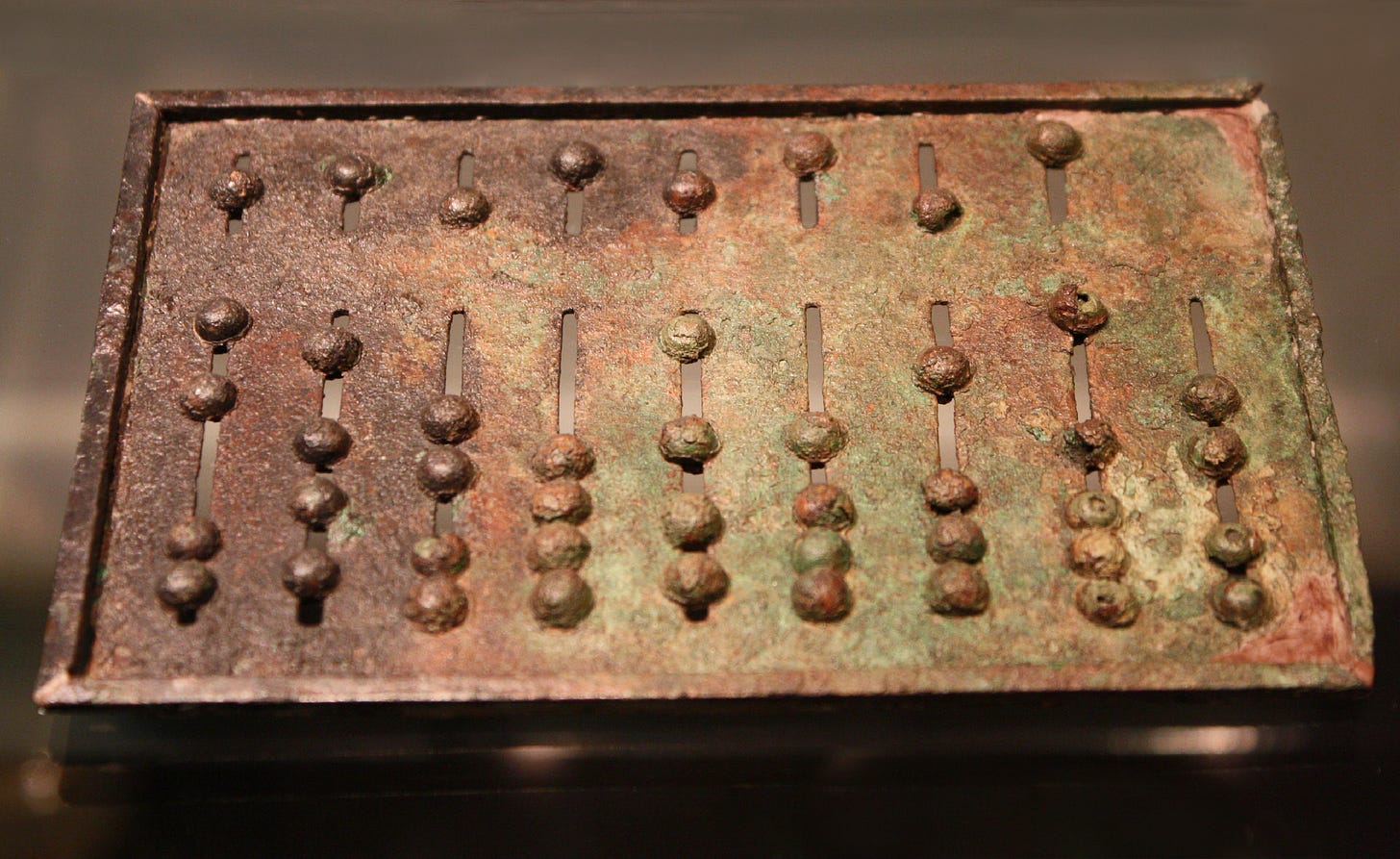




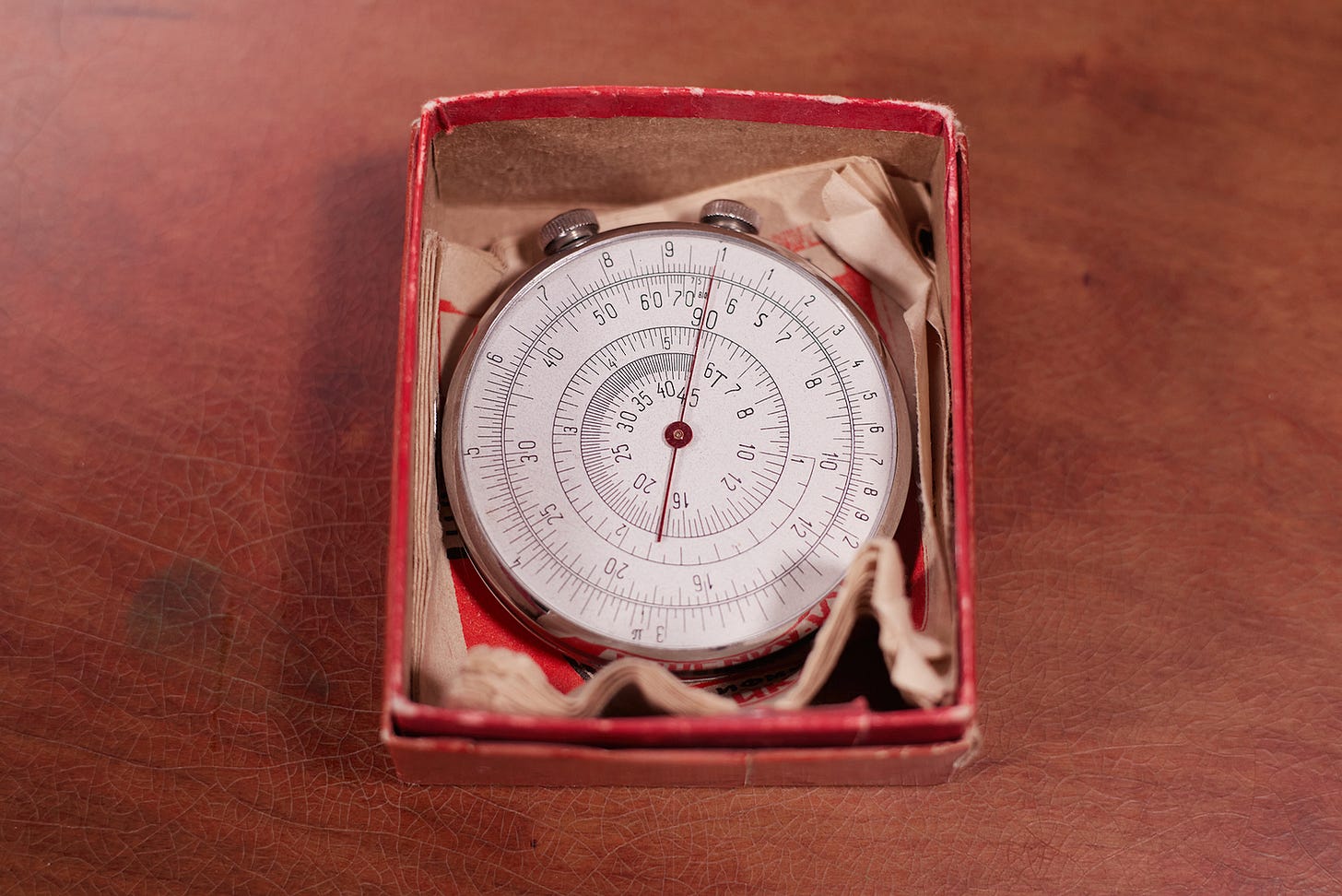

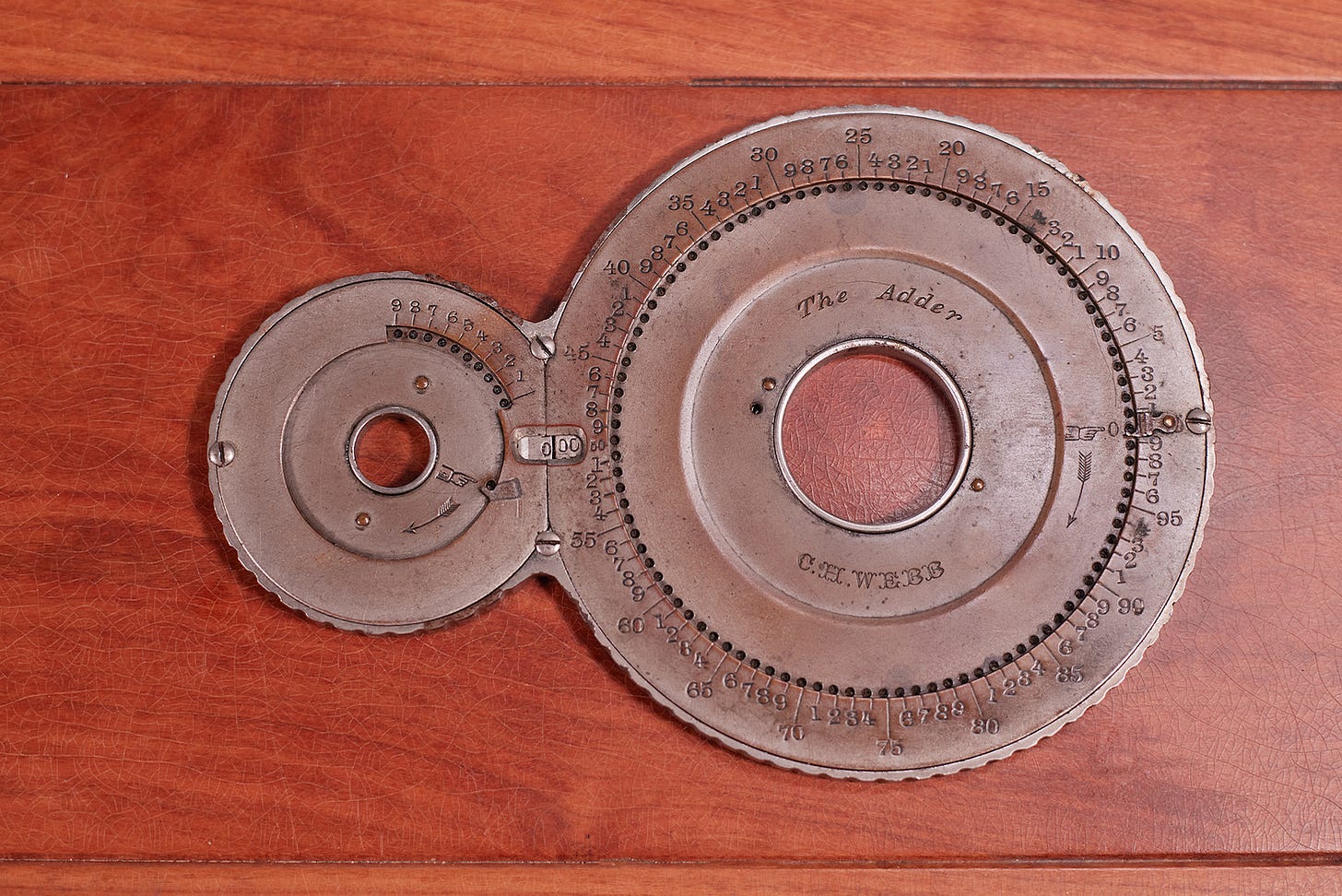
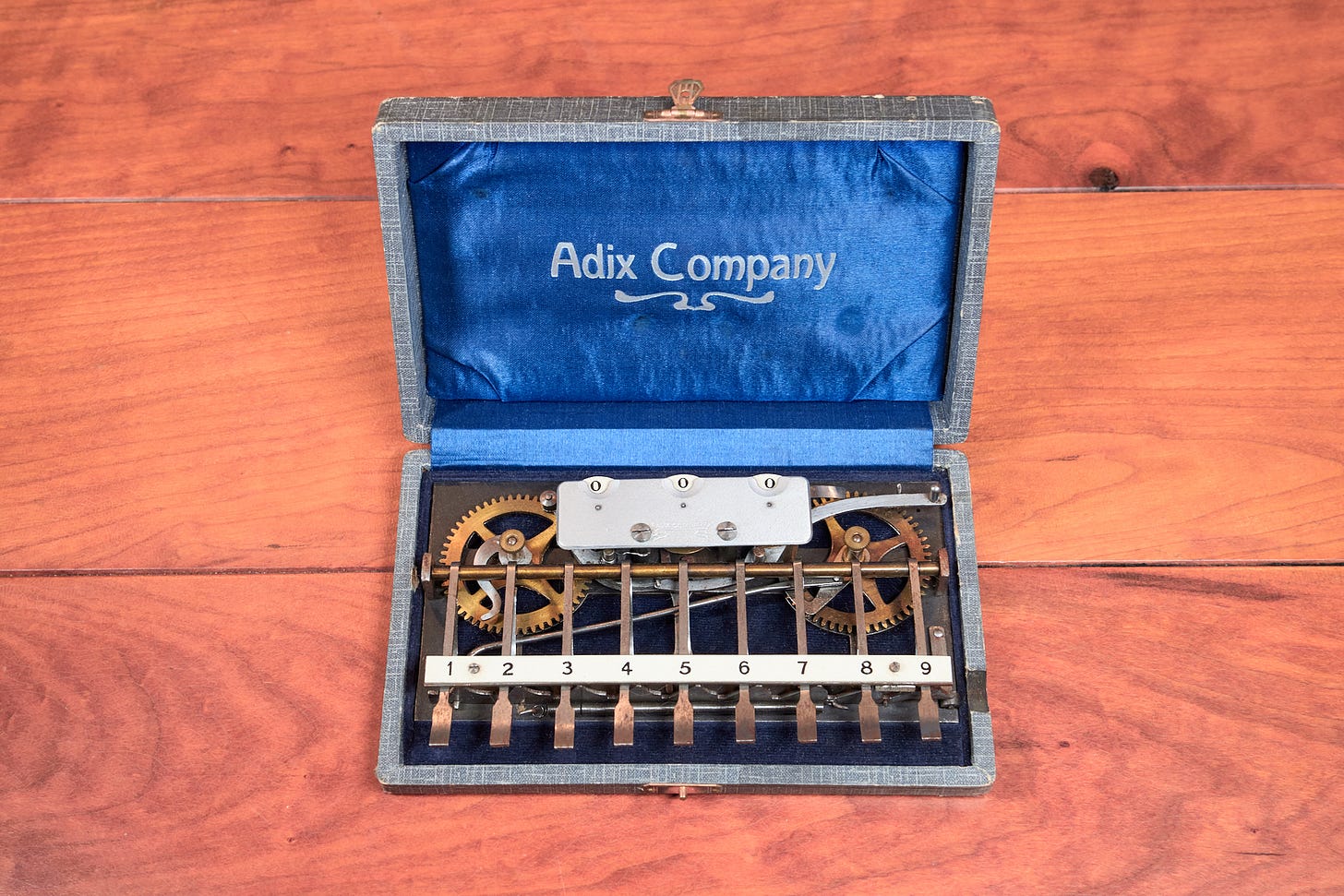


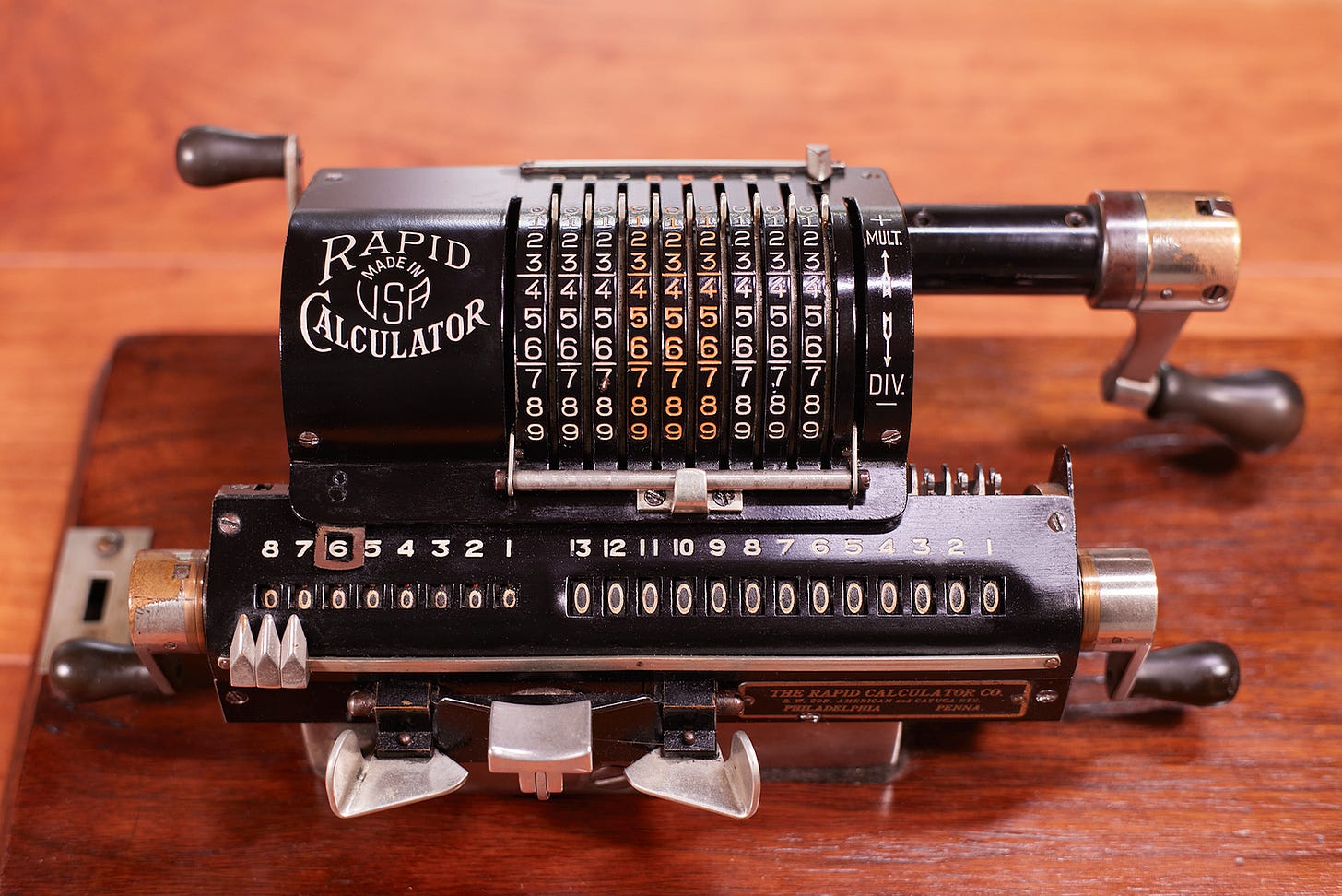



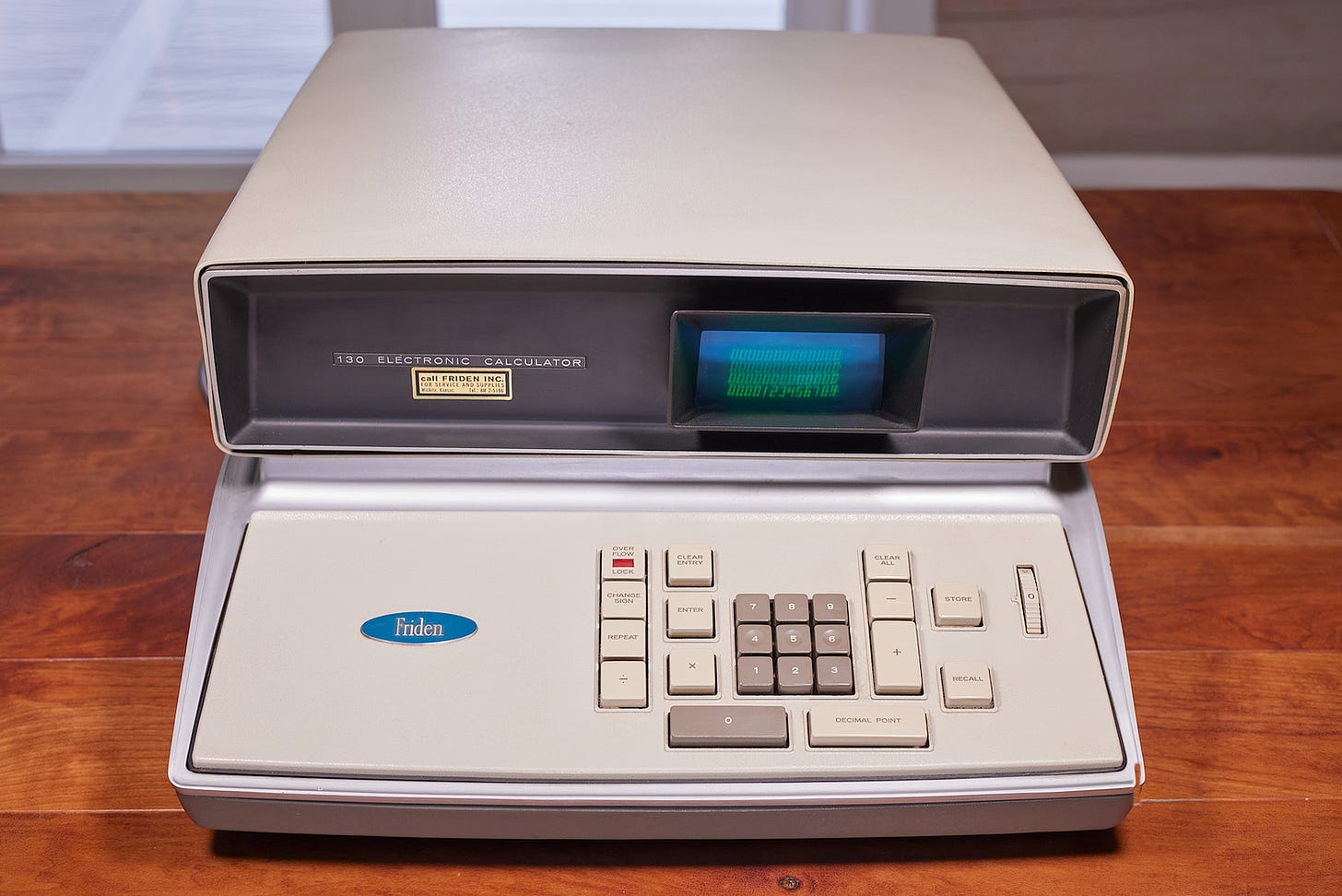
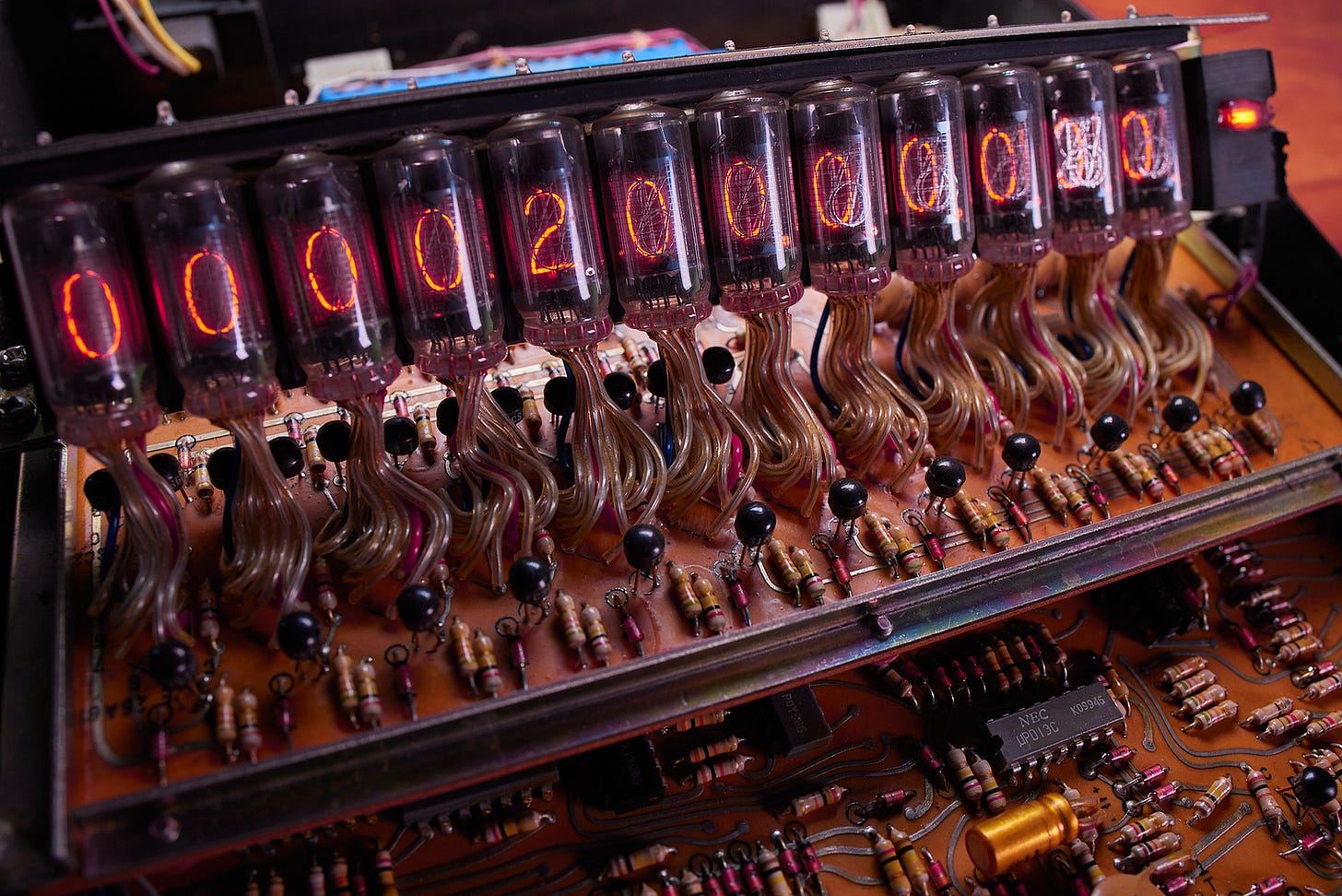


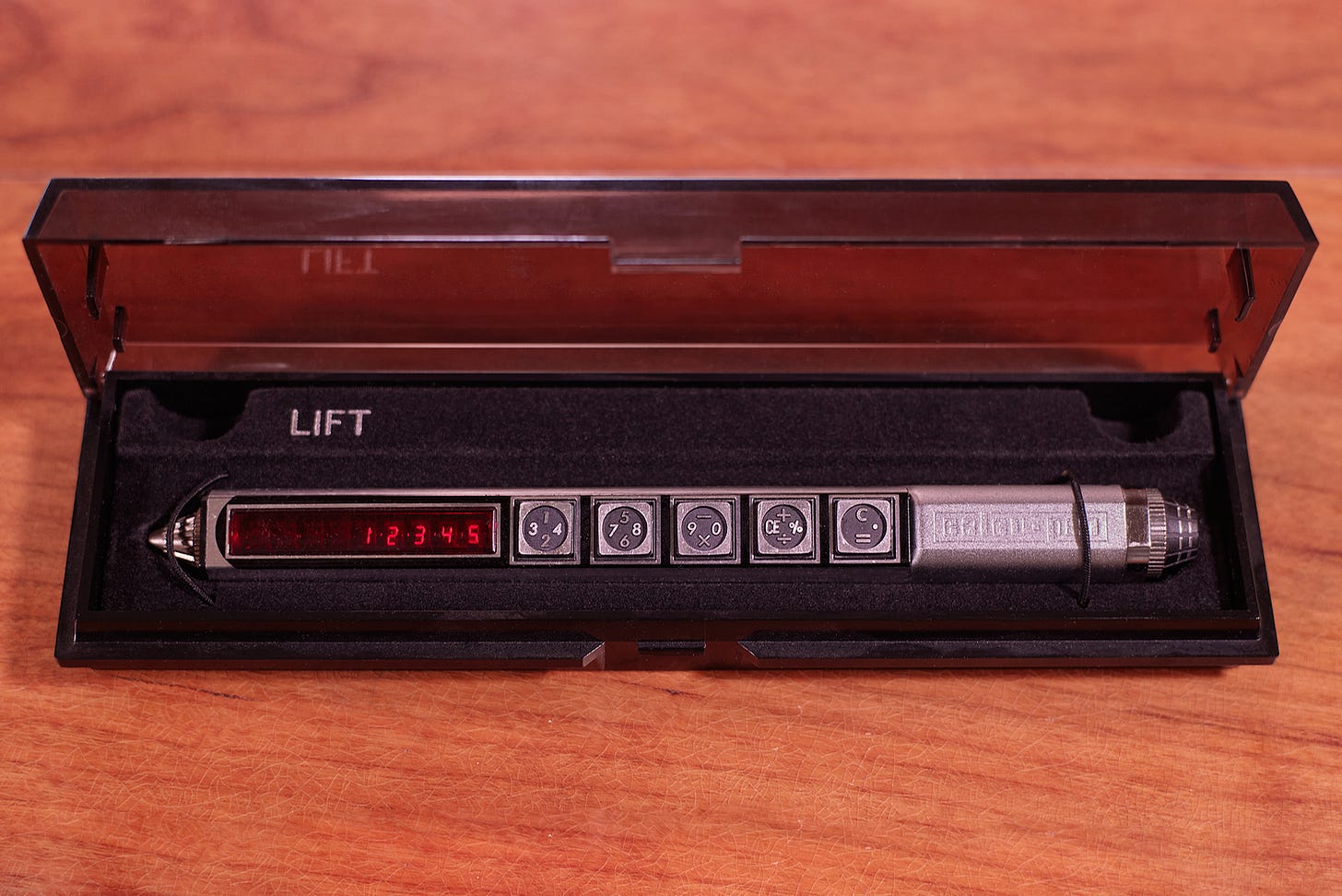

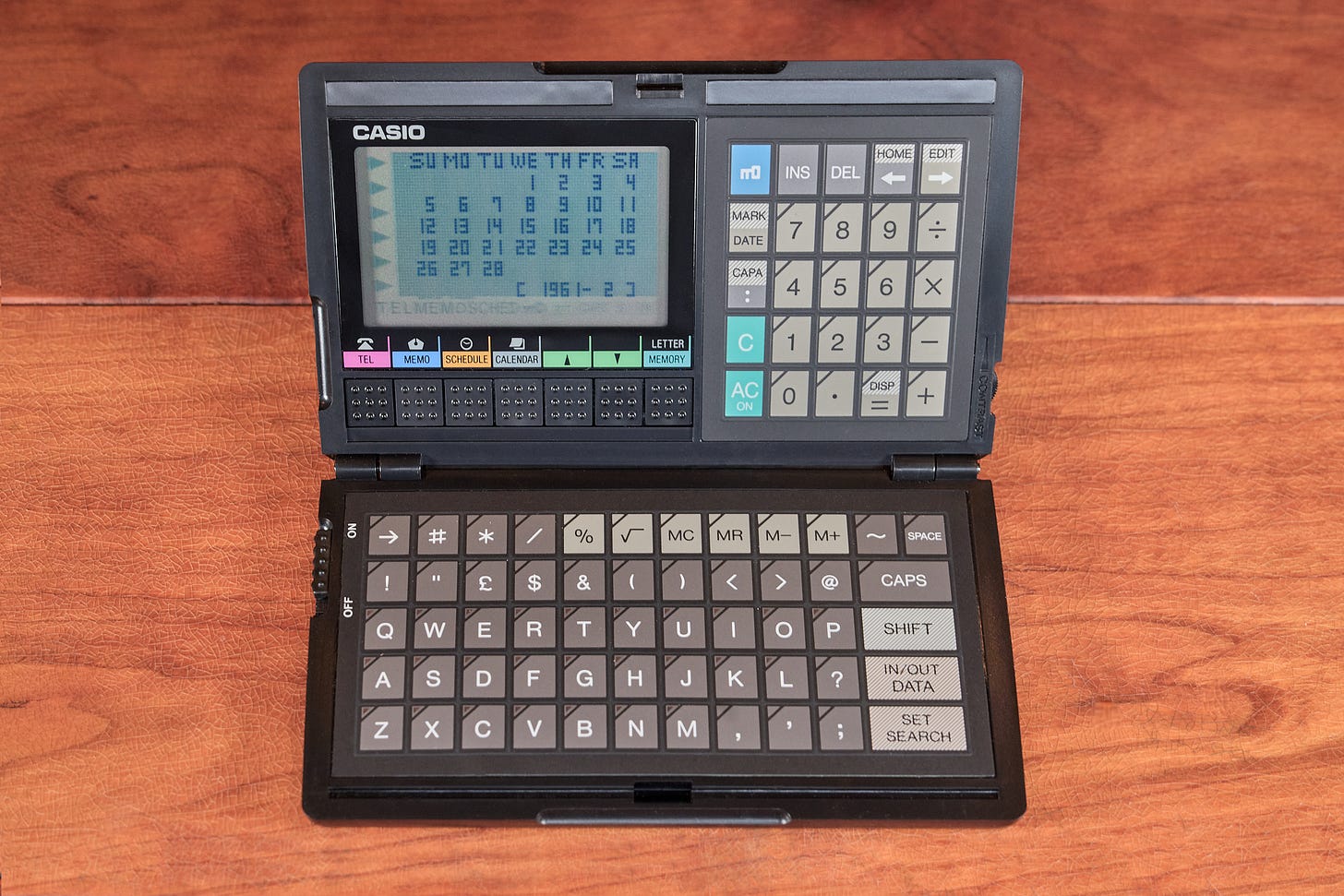
Awesome article and an impressive collection :)
Great article! I think that the Curta is also so popular because of William Gibson's book "Pattern Recognition".